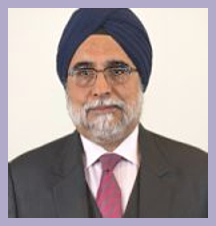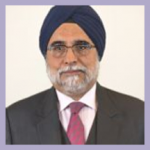 Guest blog by Satjit Singh, Chief Executive, Society for Promoting Chiropractic Education
Guest blog by Satjit Singh, Chief Executive, Society for Promoting Chiropractic Education
It is great that most of us will live to an age that our parents could never imagine. Better living standards, improved public health and an NHS accessible to all, have all helped.
This is excellent, but living longer means that we are likely to be working longer. It also means that for us to enjoy that longevity, we need to live active, fulfilling lives. Too many of the population are afflicted by ‘aches and pains’, mainly back and neck, i.e. musculoskeletal. This not only has physical implications, but like so many chronic problems, has effects on mental health too.
Musculoskeletal problems are responsible for 30% of visits to a GP 1 and have an enormous impact on the quality of life of millions of people in the UK; 10.8 million working days are lost as a consequence of musculoskeletal conditions1. Our healthcare sector, already under so much strain, has to cope with the burden of an increasing number of people presenting with MSK issues; our economy certainly cannot afford to lose so many man-days.
Not only are we faced with an increasing MSK burden, we also lack the healthcare resources to deal with it. NICE recommends manipulation as part of the package of care to deal with this; however, regulated manipulative therapists, comprising mainly chiropractors, osteopaths and some physiotherapists, are nowhere near what the country needs. We only have 3,000 chiropractors, 5,000 osteopaths and some 1,100 physiotherapists who are members of the MACP 2, trained to undertake manipulation. We need more, many more. Not only do we have an ageing population, our health workforce is ageing too. We have seen the consequences of that amongst GPs; other professions are also not immune! The ability to access a ready pool of healthcare professionals from Europe, will reduce significantly, post-Brexit.
Looking around at the chiropractic profession, I saw that there were only three universities in the UK offering chiropractic degrees. Many schools in the country were not even aware of the profession, to make it available as a choice to their A-level students. Given the current rates of growth in the UK profession, it would take over a century to achieve current rates of chiropractor access in Canada or Denmark.
That is why The Society for Promoting Chiropractic Education was established last year. Launched by George Freeman MP, former Life Sciences Minister and Chairman of the Prime Minister’s Policy Board, it aims to encourage school leavers to consider a career in chiropractic; whilst simultaneously working with universities to offer chiropractic degree programmes.
London South Bank University has launched a new four-year masters course in chiropractic and students will start their course in Autumn 2018. What is especially important, is that students will learn in multi-professional settings alongside others studying physiotherapy, nursing and occupational health. This will ensure that future graduates understand how they fit into the wider health landscape. Other programmes are planned in poorly served geographical locations.
Our aim is to work towards a situation where healthcare professionals practising manipulation become part of direct access arrangements within GP practices. For that to happen, we need more of them.
References

